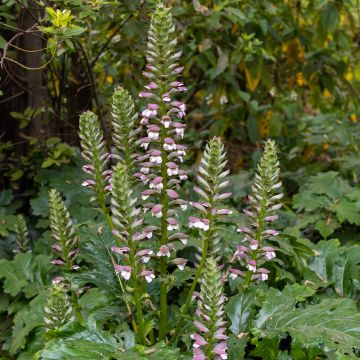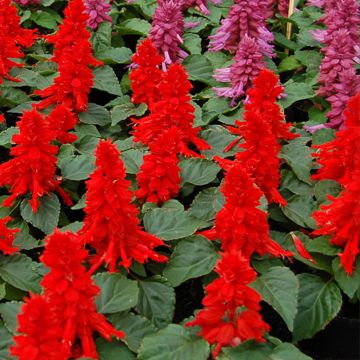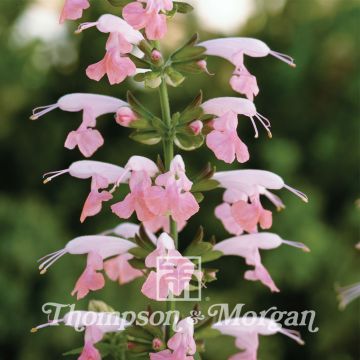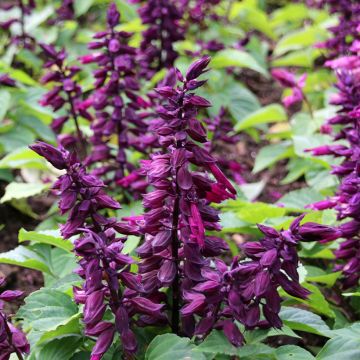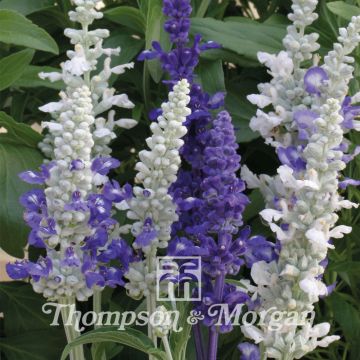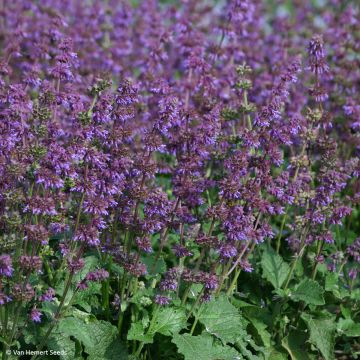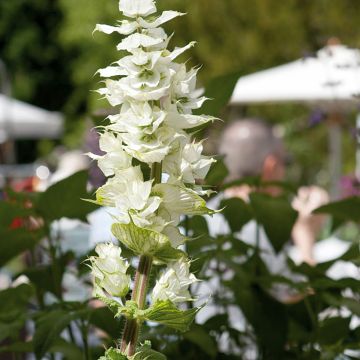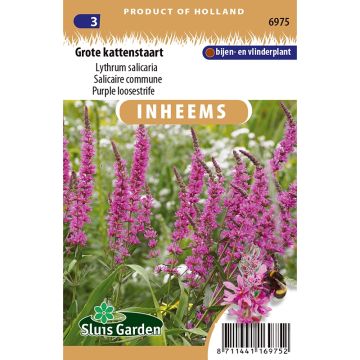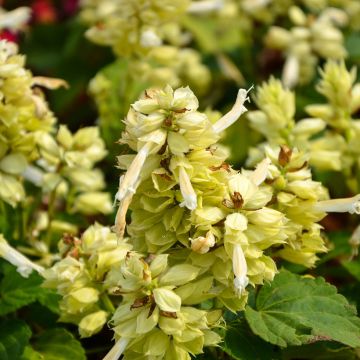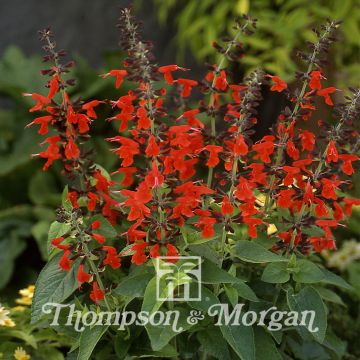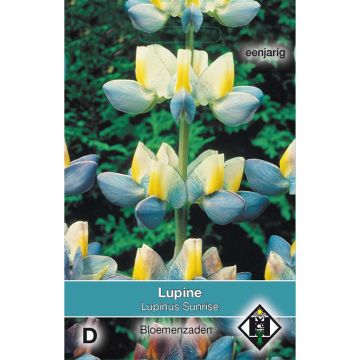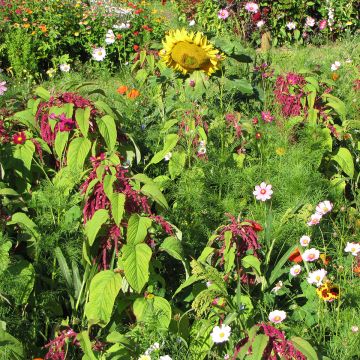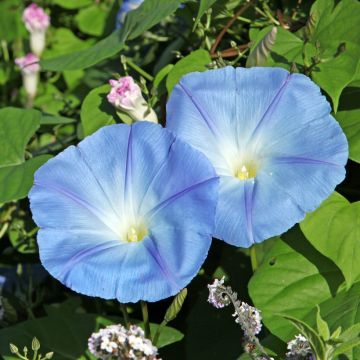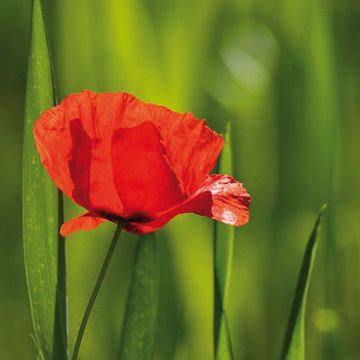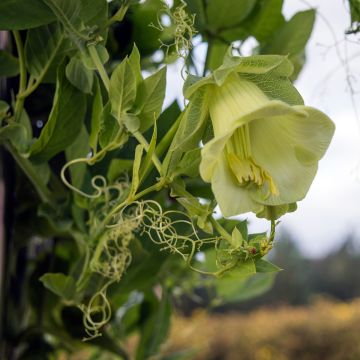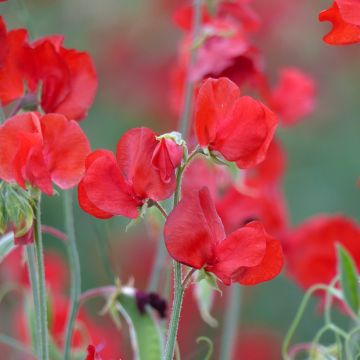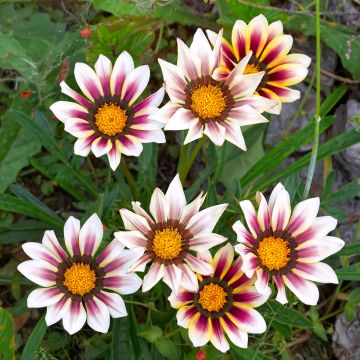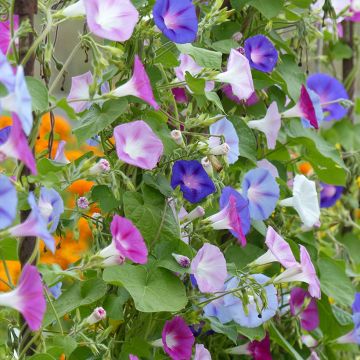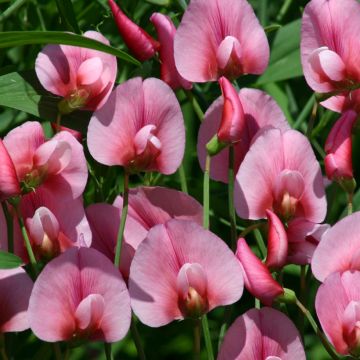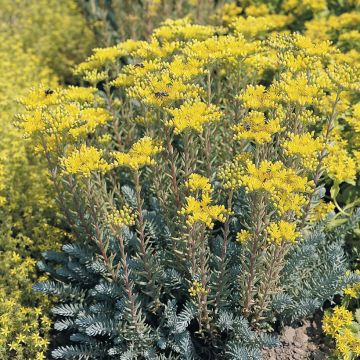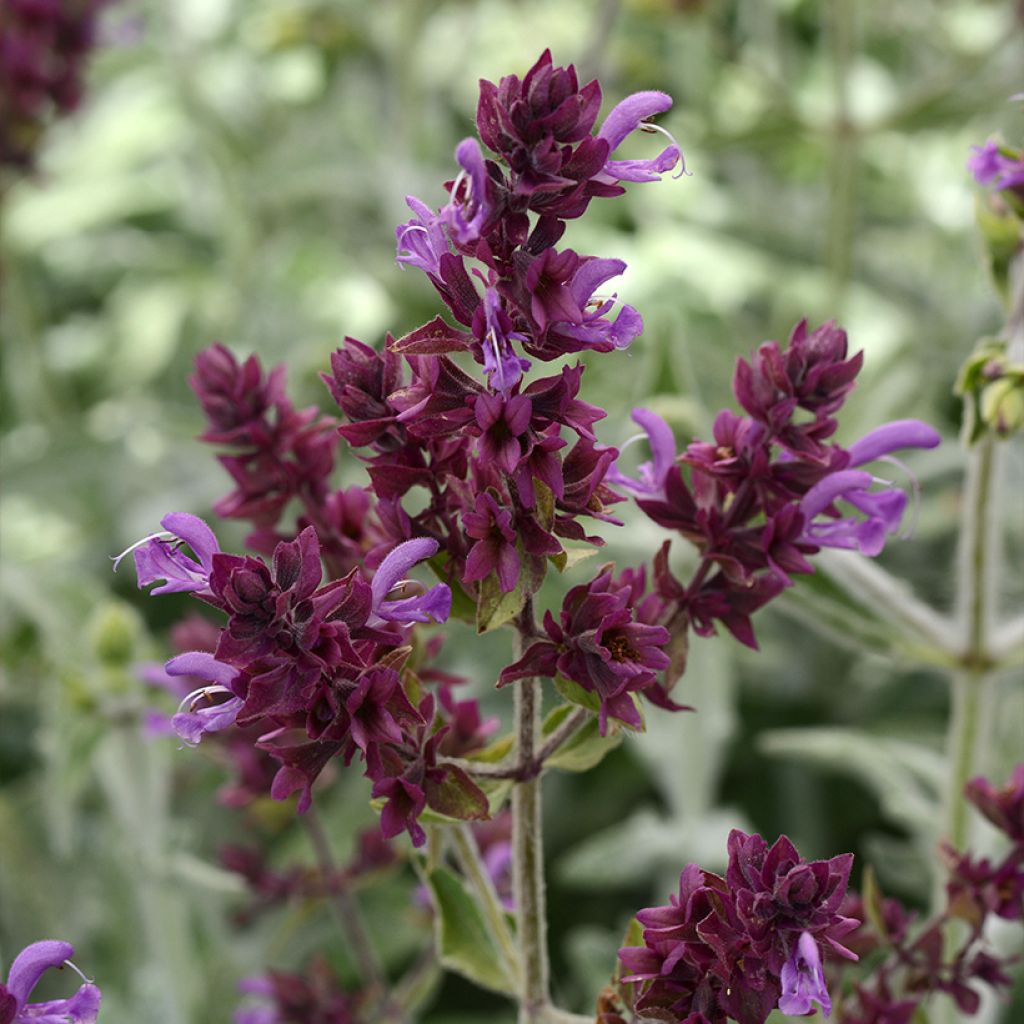

Salvia canariensis Lancelot seeds - Canary Island sage
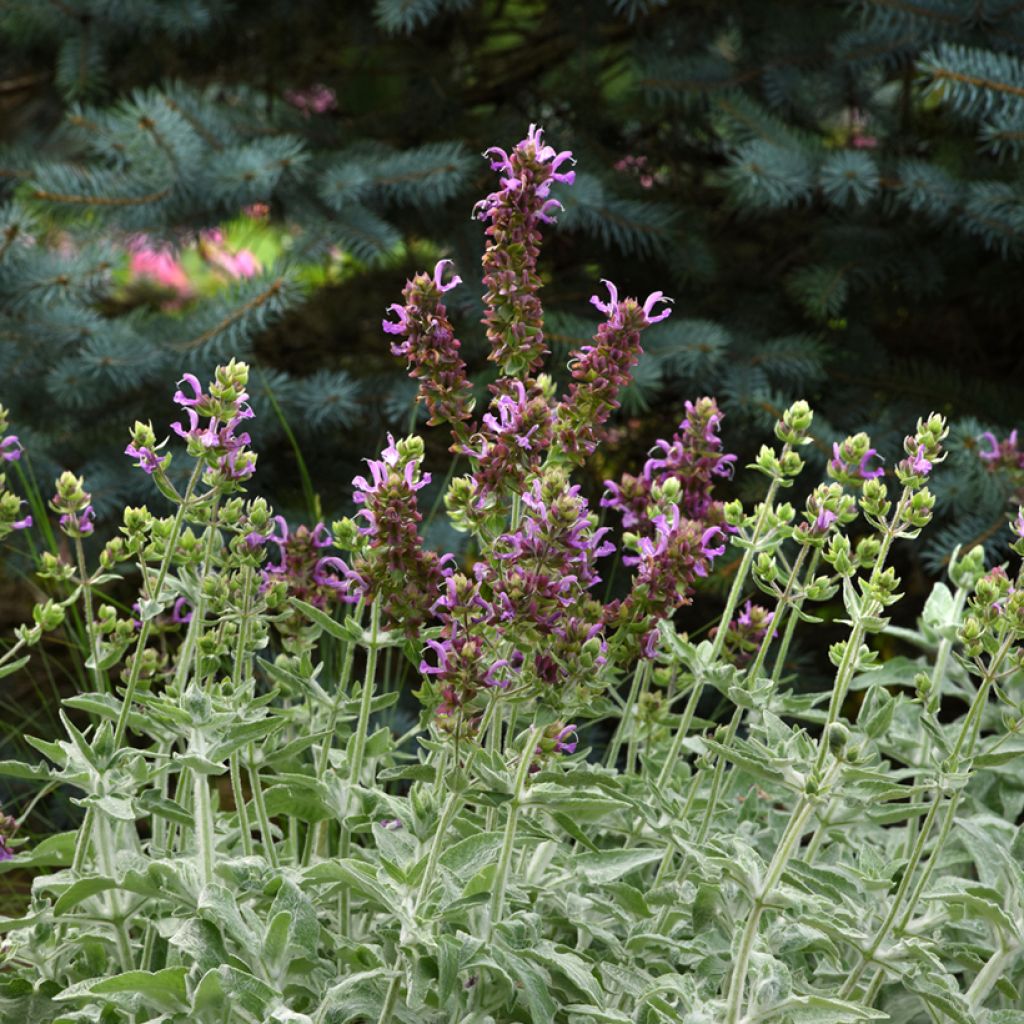

Salvia canariensis Lancelot seeds - Canary Island sage
Salvia canariensis Lancelot seeds - Canary Island sage
Salvia canariensis Lancelot
Canary Island sage
This item cannot be shipped to the selected country
Dispatch by letter from €3.90
Delivery to Corse prohibited
More information
Schedule delivery date,
and select date in basket
This plant carries a 6 months recovery warranty
More information
We guarantee the quality of our plants for a full growing cycle, and will replace at our expense any plant that fails to recover under normal climatic and planting conditions.
Seed-only orders are dispatched by sealed envelope. The delivery charge for seed-only orders is €3.90.
Delivery to Corse prohibited: UE law prohibits the import of this plant from mainland France to Corse as part of the fight against Xylella fastidiosa. Please accept our sincere apologies.
More information
Does this plant fit my garden?
Set up your Plantfit profile →
Description
Salvia canariensis 'Lancelot' is a variety of Canary Island sage selected for its more compact habit, its almost white velvety foliage, and its splendid summer flowering of lavender pink with purple bracts. This perennial sage with a bushy habit is a fantastic plant for borders, rockeries, or dry gardens. Its foliage is aromatic, and its generous flowering feeds pollinators. Plant it in full sun, in well-drained, even dry soil. Its hardiness does not exceed -8°C in well-drained soil, but growing it in pots allows you to shelter it in winter in cold regions.
The Canary Island sage 'Lancelot' belongs to the Lamiaceae family, a family rich in aromatic and ornamental species. It is a horticultural selection from PanAmerican Seed (U.S.A). The wild species, Salvia canariensis, is native to the Canary Islands, where it naturally grows in dry and sunny areas, often on rocky soils. The 'Lancelot' variety has a perennial crown, and the base of its stems becomes woody over time. Rapid-growing, the plant has a bushy habit, reaching up to 1.10 m in height with a spread of 55 cm. Its flexible stems give a lot of lightness to the vegetation that undulates at the slightest breeze. Its foliage consists of large lanceolate leaves, measuring between 10 and 15 cm in length. These leaves are covered with a thick white fuzz, they are soft and velvety. When crushed, they release a light fragrance. This beautiful foliage persists in winter. The square-sectioned stems, covered with white fuzz, enhance the plant's decorative character even outside of the flowering period.
The flowering of Salvia canariensis 'Lancelot' is spectacular. Depending on the climate, it can start in May-June or in June-July. The long spike-like inflorescences, up to 30 cm in length, bear tubular flowers grouped in spaced whorls. Each flower, measuring about 2.5 cm, displays a lavender pink colour, a pink tinged with blue. These flowers are supported by wide and persistent purple-pink bracts, which remain decorative long after the petals have fallen. the slightly velvety flowers have an upper lip in the shape of a hood, sheltering the stamens, while the lower lip spreads into three smaller lobes. Their vivid shape and colour attract many pollinators, such as bees and butterflies.
In the garden, the Canary Island sage 'Lancelot' allows for creating very colourful borders and beds. Its strong presence and generous flowering work well with other shrubby or perennial plants. To accompany it, choose for example shrubby salvias with blue flowers, Phlomis purpurea, clary sage, Euphorbia characias (Mediterranean spurge), and Cistus creticus (Cretan rockrose). All these plants appreciate full sun and well-drained soils. They form a typical scene in Mediterranean gardens. Salvia canariensis 'Lancelot' can also be grown in pots to bring a touch of exoticism to the terrace.
Report an error about the product description
Salvia canariensis Lancelot seeds - Canary Island sage in pictures
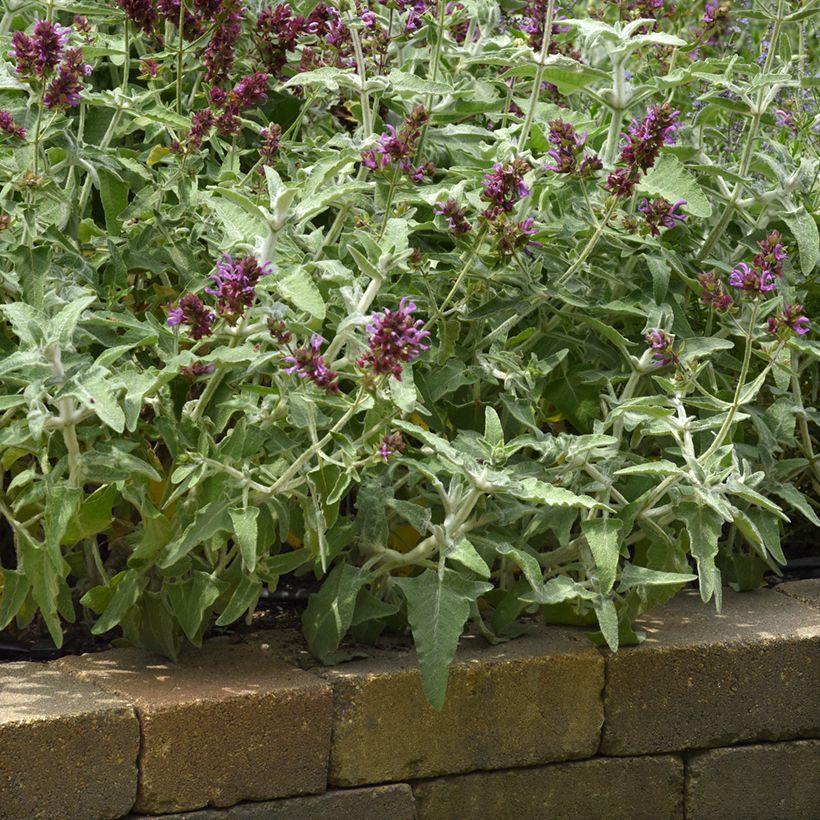

Flowering
Foliage
Plant habit
Botanical data
Salvia
canariensis
Lancelot
Lamiaceae
Canary Island sage
Salvia canariensis var. candidissima
Cultivar or hybrid
Other Salvia seeds
Planting and care
To sow 'Lancelot' Canary sage, several methods can be used. Sowing can be done indoors from early spring, or directly in the ground when the risk of frost has passed. In regions where winters are mild, this sage can also be sown in early autumn, directly in place.
For indoor sowing, fill pots or a seed tray with light and well-draining soil, and place the seeds on the surface without covering them too much, as they need light to germinate. Keep the substrate slightly moist and at a temperature of around 18-20°C. Germination generally occurs within 2 to 4 weeks. Once the seedlings are sufficiently developed and outdoor temperatures are milder, you can transplant them into the ground or into pots.
Salvia canariensis prefers full sun for abundant flowering and vigorous foliage. It thrives in well-drained soil, preferably poor or moderately fertile, to prevent excessive foliage growth at the expense of flowers. This sage is particularly suitable for Mediterranean climates or dry gardens, as it tolerates drought well once established. However, it shows limited cold resistance, only tolerating temperatures down to -8°C at the lowest, in well-drained soil.
In regions with harsh winters, it is advisable to cultivate it in a pot so it can be brought indoors for protection. Moderate watering is recommended, avoiding excess moisture, which could lead to root rot.
Sowing period
Intended location
This item has not been reviewed yet - be the first to leave a review about it.
Flower seeds
Haven't found what you were looking for?
Hardiness is the lowest winter temperature a plant can endure without suffering serious damage or even dying. However, hardiness is affected by location (a sheltered area, such as a patio), protection (winter cover) and soil type (hardiness is improved by well-drained soil).

Photo Sharing Terms & Conditions
In order to encourage gardeners to interact and share their experiences, Promesse de fleurs offers various media enabling content to be uploaded onto its Site - in particular via the ‘Photo sharing’ module.
The User agrees to refrain from:
- Posting any content that is illegal, prejudicial, insulting, racist, inciteful to hatred, revisionist, contrary to public decency, that infringes on privacy or on the privacy rights of third parties, in particular the publicity rights of persons and goods, intellectual property rights, or the right to privacy.
- Submitting content on behalf of a third party;
- Impersonate the identity of a third party and/or publish any personal information about a third party;
In general, the User undertakes to refrain from any unethical behaviour.
All Content (in particular text, comments, files, images, photos, videos, creative works, etc.), which may be subject to property or intellectual property rights, image or other private rights, shall remain the property of the User, subject to the limited rights granted by the terms of the licence granted by Promesse de fleurs as stated below. Users are at liberty to publish or not to publish such Content on the Site, notably via the ‘Photo Sharing’ facility, and accept that this Content shall be made public and freely accessible, notably on the Internet.
Users further acknowledge, undertake to have ,and guarantee that they hold all necessary rights and permissions to publish such material on the Site, in particular with regard to the legislation in force pertaining to any privacy, property, intellectual property, image, or contractual rights, or rights of any other nature. By publishing such Content on the Site, Users acknowledge accepting full liability as publishers of the Content within the meaning of the law, and grant Promesse de fleurs, free of charge, an inclusive, worldwide licence for the said Content for the entire duration of its publication, including all reproduction, representation, up/downloading, displaying, performing, transmission, and storage rights.
Users also grant permission for their name to be linked to the Content and accept that this link may not always be made available.
By engaging in posting material, Users consent to their Content becoming automatically accessible on the Internet, in particular on other sites and/or blogs and/or web pages of the Promesse de fleurs site, including in particular social pages and the Promesse de fleurs catalogue.
Users may secure the removal of entrusted content free of charge by issuing a simple request via our contact form.
The flowering period indicated on our website applies to countries and regions located in USDA zone 8 (France, the United Kingdom, Ireland, the Netherlands, etc.)
It will vary according to where you live:
- In zones 9 to 10 (Italy, Spain, Greece, etc.), flowering will occur about 2 to 4 weeks earlier.
- In zones 6 to 7 (Germany, Poland, Slovenia, and lower mountainous regions), flowering will be delayed by 2 to 3 weeks.
- In zone 5 (Central Europe, Scandinavia), blooming will be delayed by 3 to 5 weeks.
In temperate climates, pruning of spring-flowering shrubs (forsythia, spireas, etc.) should be done just after flowering.
Pruning of summer-flowering shrubs (Indian Lilac, Perovskia, etc.) can be done in winter or spring.
In cold regions as well as with frost-sensitive plants, avoid pruning too early when severe frosts may still occur.
The planting period indicated on our website applies to countries and regions located in USDA zone 8 (France, United Kingdom, Ireland, Netherlands).
It will vary according to where you live:
- In Mediterranean zones (Marseille, Madrid, Milan, etc.), autumn and winter are the best planting periods.
- In continental zones (Strasbourg, Munich, Vienna, etc.), delay planting by 2 to 3 weeks in spring and bring it forward by 2 to 4 weeks in autumn.
- In mountainous regions (the Alps, Pyrenees, Carpathians, etc.), it is best to plant in late spring (May-June) or late summer (August-September).
The harvesting period indicated on our website applies to countries and regions in USDA zone 8 (France, England, Ireland, the Netherlands).
In colder areas (Scandinavia, Poland, Austria...) fruit and vegetable harvests are likely to be delayed by 3-4 weeks.
In warmer areas (Italy, Spain, Greece, etc.), harvesting will probably take place earlier, depending on weather conditions.
The sowing periods indicated on our website apply to countries and regions within USDA Zone 8 (France, UK, Ireland, Netherlands).
In colder areas (Scandinavia, Poland, Austria...), delay any outdoor sowing by 3-4 weeks, or sow under glass.
In warmer climes (Italy, Spain, Greece, etc.), bring outdoor sowing forward by a few weeks.

































